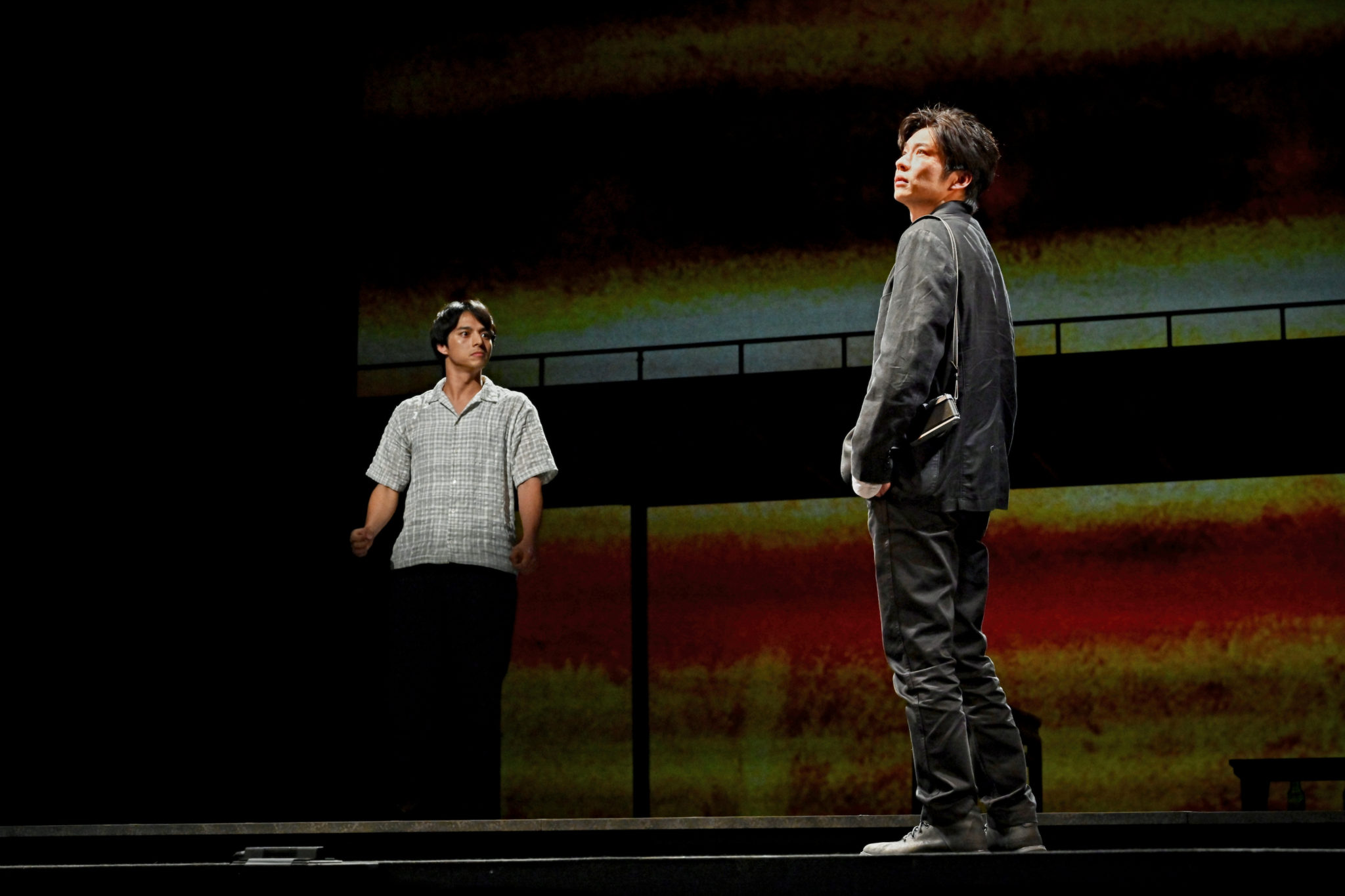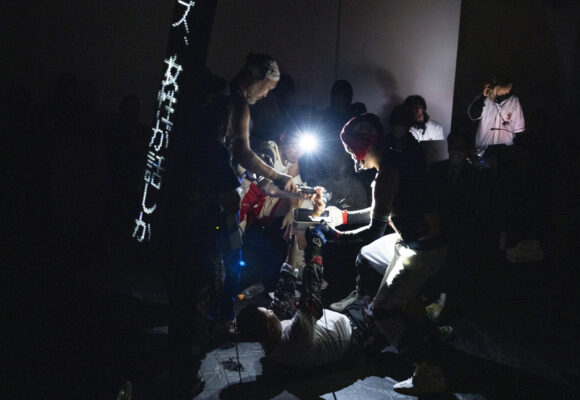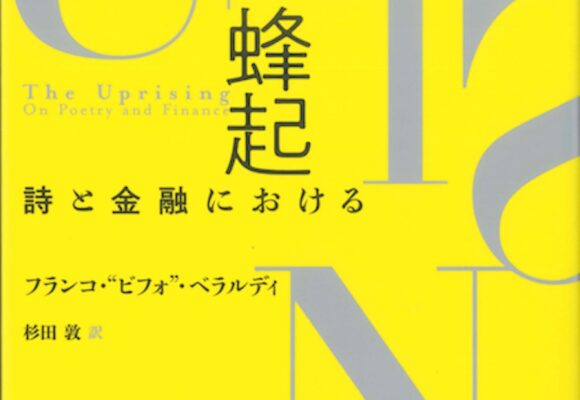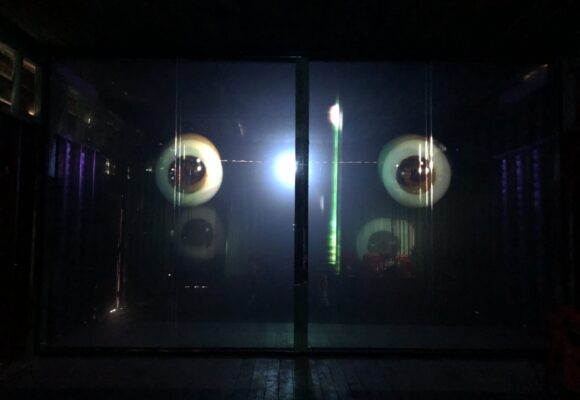Received a Master’s Degree (in theater studies and dance) from Waseda University, Graduate School of Letters, Arts and Sciences. Active as a writer mainly on topics related to contemporary theater, traditional performing arts, ballet, dance, musical and opera. She currently writes regularly for the online magazine Ontomo, focusing on theatre from an auditory perspective (“Mimi kara miru butai,” https://ontomo-mag.com/tag/mimi-kara-miru/), the ballet magazine Swan Magazine (“Bare fan ni okuru opera mangekyo”), and the ballet-focused online publication Ballet Channel (“Suteji kosaten,” https://balletchannel.jp/genre/ayako-takahashi). First prize winner at the 10th Japan Dance Critics’ Award.
SETAGAYA PUBLIC THATRE × PASONA GROUP “CHIMERICA” Photo: Shinji Hosono
People sometimes compare the eyes to a camera and the retina to film. But we humans do not experience what is projected onto our retinas directly; what we see before us is the result of our brains processing information in various ways. In other words, what is captured on camera occasionally cannot be seen by the naked eye. Joe, the protagonist in British play wright Lucy Kirkwood’s “Chimerica”, can be said to symbolize this phenomenon.
The play (which had its world premiere in 2013) takes place in China and the United States in 1989, when Kirkwood was five years old, and 2012, 2013. In the older timeline, the image of a man standing in front of a tank during the Tiananmen Square protests is broadcast around the world, but the identity or fate of this individual, known only as “Tank Man”, are lost to history. Twenty-three years later, news cameraman Joe (Kei Tanaka), who made a name for himself at a young age by capturing Tank Man’s bravery on film, hears from an old friend. This Zhang Lin (Shinnosuke Mitsushima) implies that the man is alive, and Joe sets out to find him. The story, which weaves together events in 1989 and 2012 while crisscrossing between China and the US, also involves a love affair between Joe and Tessa (Kana Kurashina), a British woman.
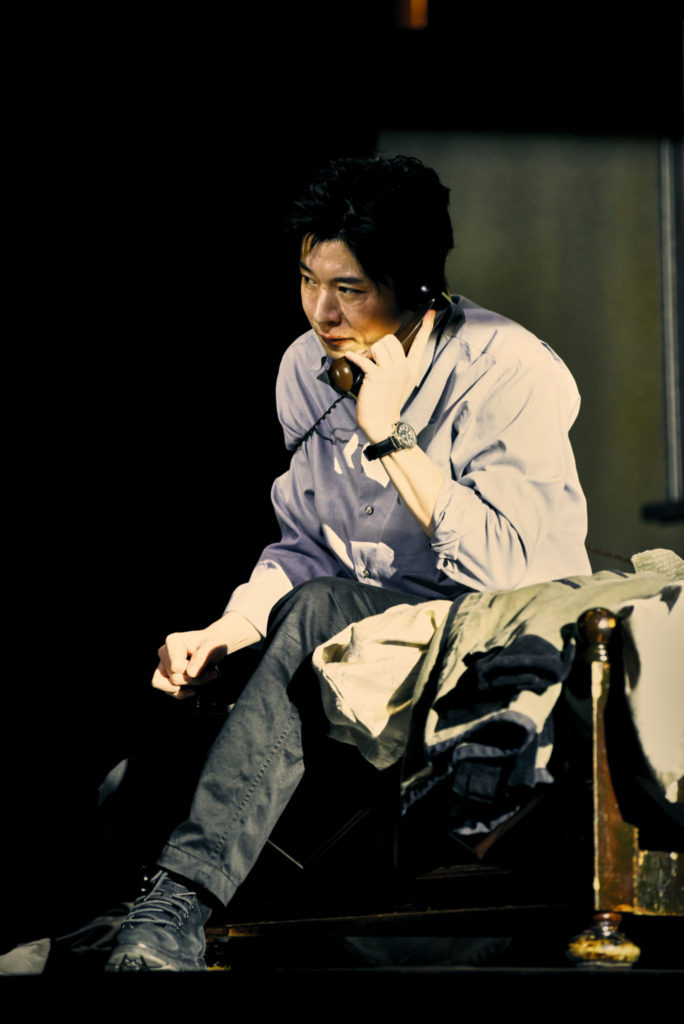
SETAGAYA PUBLIC THATRE × PASONA GROUP “CHIMERICA” Photo: Shinji Hosono
The depiction of these two different eras is brilliant. In 1989, the Chinese government violently suppresses a democracy movement led by students and common people, inviting condemnation by the international community. Meanwhile, in America, a decade after the Pentagon Papers affair and the Watergate scandal, journalism remains committed to its role as the Fourth Estate that acts as a check on government, and the public expects nothing less of it. Fast-forward to the 2010s and China is an economic superpower threatening US supremacy, while journalism is on the decline in an America suffering in the throes of recession. Faced with these circumstances, Joe aims to find the historic character who stood up against oppression and prove that “there is heroism in the world.” But the paper he works at is now under the influence of Chinese capital and refuses to let him continue reporting. Joe’s lone-wolf tactics force people who have been living quietly into misery. He eventually finds the person Zhang Lin talked about, only to discover that this character is not the “Tank Man” in that iconic image, but another key person that nobody ever even thought of looking at.
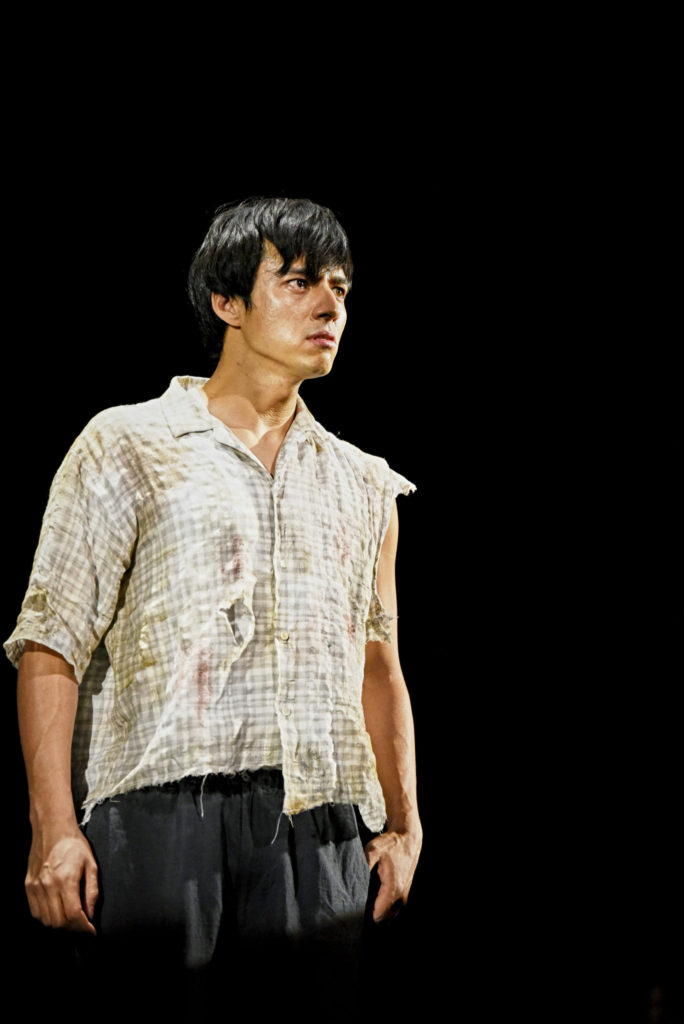
SETAGAYA PUBLIC THATRE × PASONA GROUP “CHIMERICA” Photo: Shinji Hosono
Joe’s burning sense of justice leading to acts with wholly unintended consequences is reminiscent of the tragedy of Oedipus, but simultaneously speaks directly to us witnessing a crisis of liberalism and the defeat of journalism. Kei Tanaka delicately captures Joe’s passion, impatience and arrogance, whereas Shinnosuke Mitsushima offers a sharp depiction of the deeply hurt and resigned Zhang Lin, whose strong will nonetheless survives.
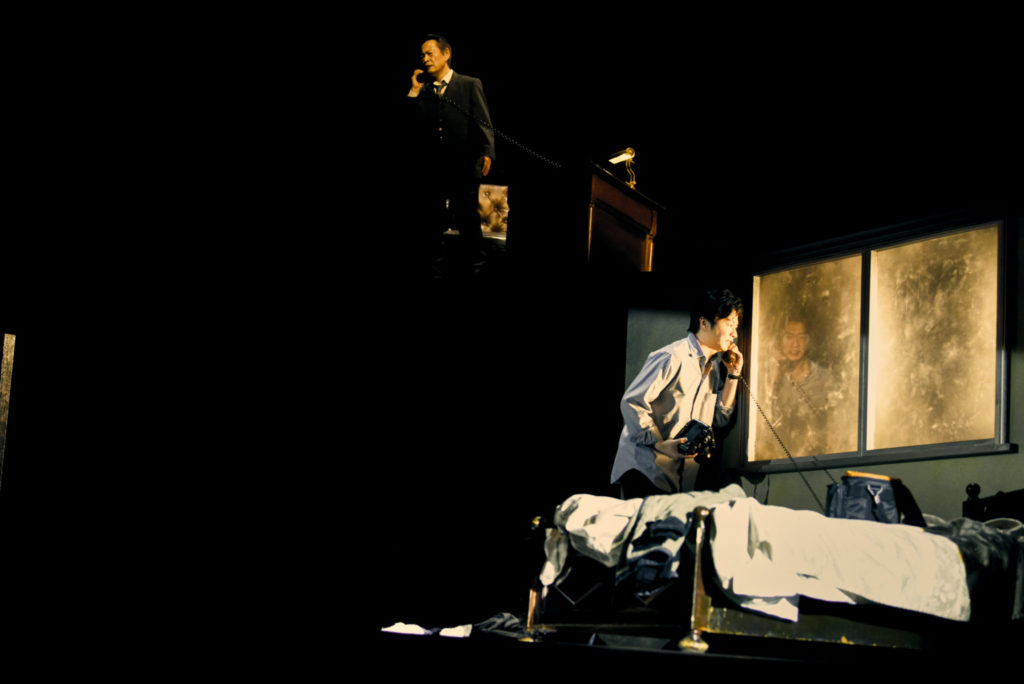
SETAGAYA PUBLIC THATRE × PASONA GROUP “CHIMERICA” Photo: Shinji Hosono
Tamiya Kuriyama’s production makes use of moving props to achieve a sense of speed that resembles the taking of pictures. While the many serious scenes make it difficult for the audience to appreciate the bits of humor sprinkled throughout the play, the final scene, in which everything is focused on the true “Tank Man”, is spectacular. A familiar character stands before us, clutching the same plastic bag and wearing the same clothes as that iconic individual. In that image, we have an intersection of history and the present, of fiction and reality – the ultimate climax.
Translated by Ilmari Saarinen
INFORMATION
SETAGAYA PUBLIC THATRE × PASONA GROUP "CHIMERICA"
SETAGAYA PUBLIC THATRE
2019.2.6 - 24
Chimerica by Lucy Kirkwood
Directed by Tamiya Kuriyama


